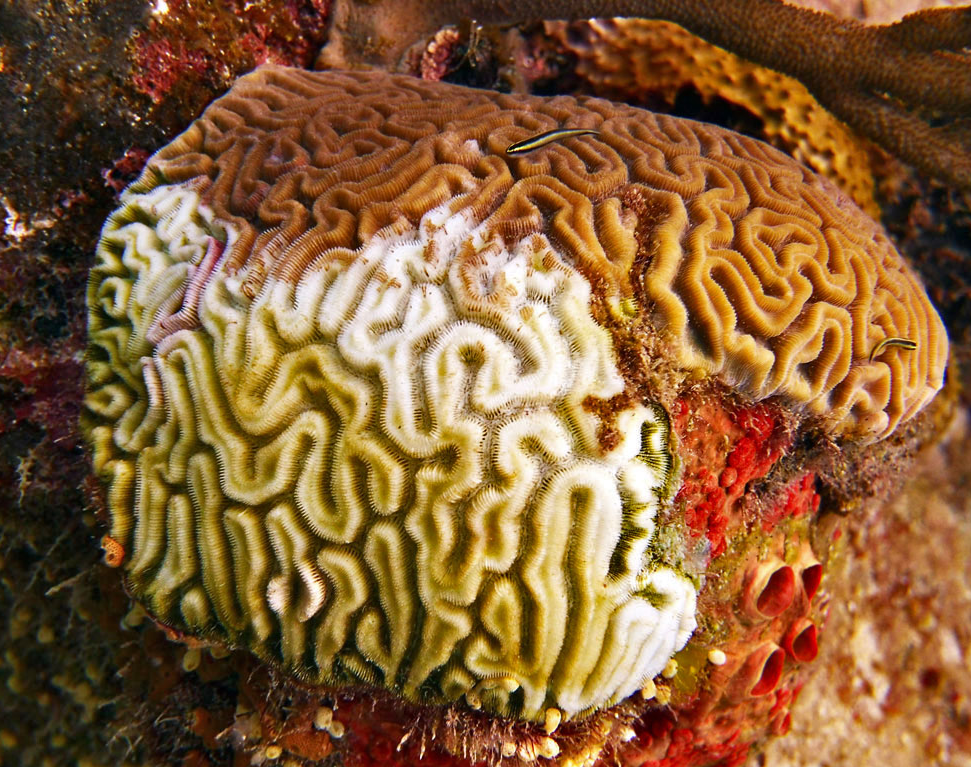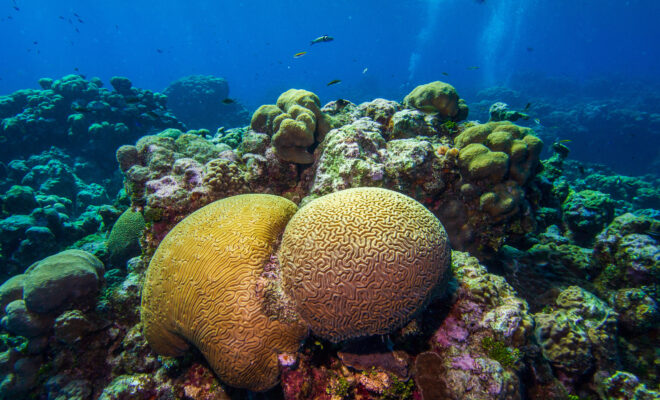By Natalia Hurtado (The Island School & Perry Institute for Marine Science)
If you’ve ever been diving, snorkeling or spear fishing on a coral reef, you probably noticed corals that look like a brain. Did you know that there are 4 different brain coral species in the Caribbean? Properly identifying them can be tricky at first, because you have to look closely at their valleys and ridges to spot differences between them. Our coral team based at The Island School, provides coral ID lessons to a wide range of visitors and schools, they will help you master your Caribbean brain coral identification skills. Is your brain up for the challenge?
Brain corals grow very slowly by only a few millimeters per year, they are essential foundation species which build durable structures that support the reef. These stony corals form a super hard calcium carbonate skeleton with a wrinkled surface that resembles a human brain. You can find brain corals from the shallowest parts of the reef down to 40 meters (130 feet) and they are generally round and sometimes reach sizes over 2 meters (6 feet) in diameter, depending on the species. Once they get big, brain corals provide habitat to countless marine species and contribute to coastal protection by standing strong in the face of storms and hurricanes.
Let’s take a closer look at our 4 brain coral species:
Grooved brain coral (Diploria labyrinthiformis) – The easiest brain to identify
This brain coral forms massive hemispherical colonies and is easily recognizable by its wide double-valley character, which, as its scientific name says, looks like a labyrinth. They are normally a pale yellow, gray or tan color.
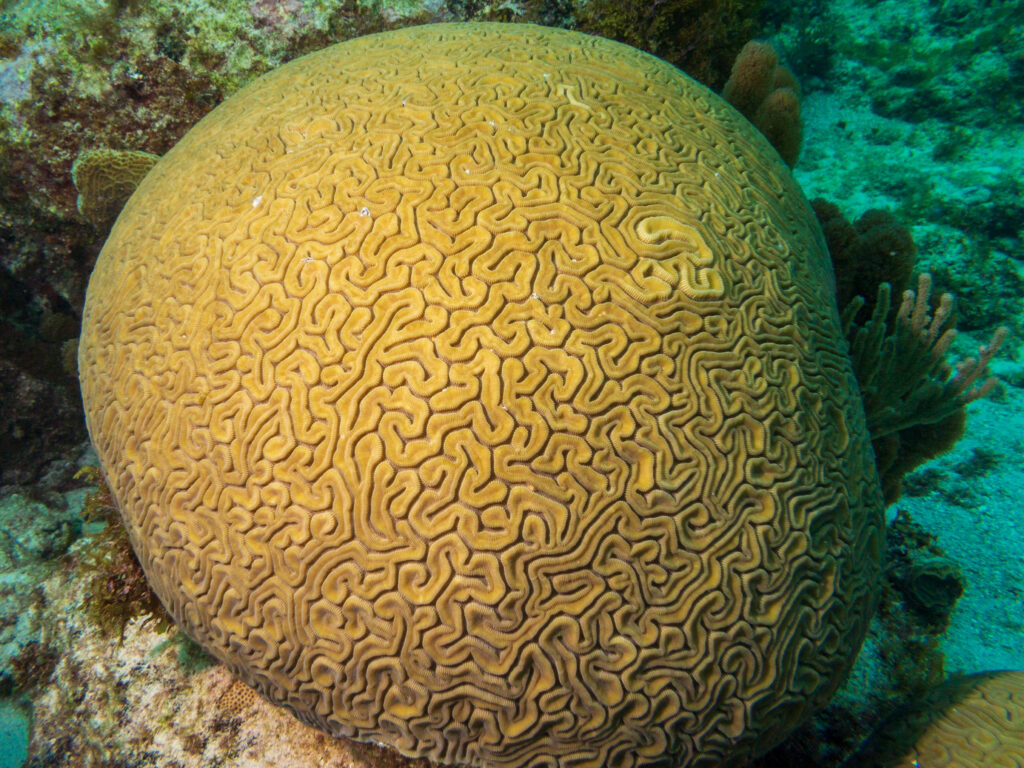
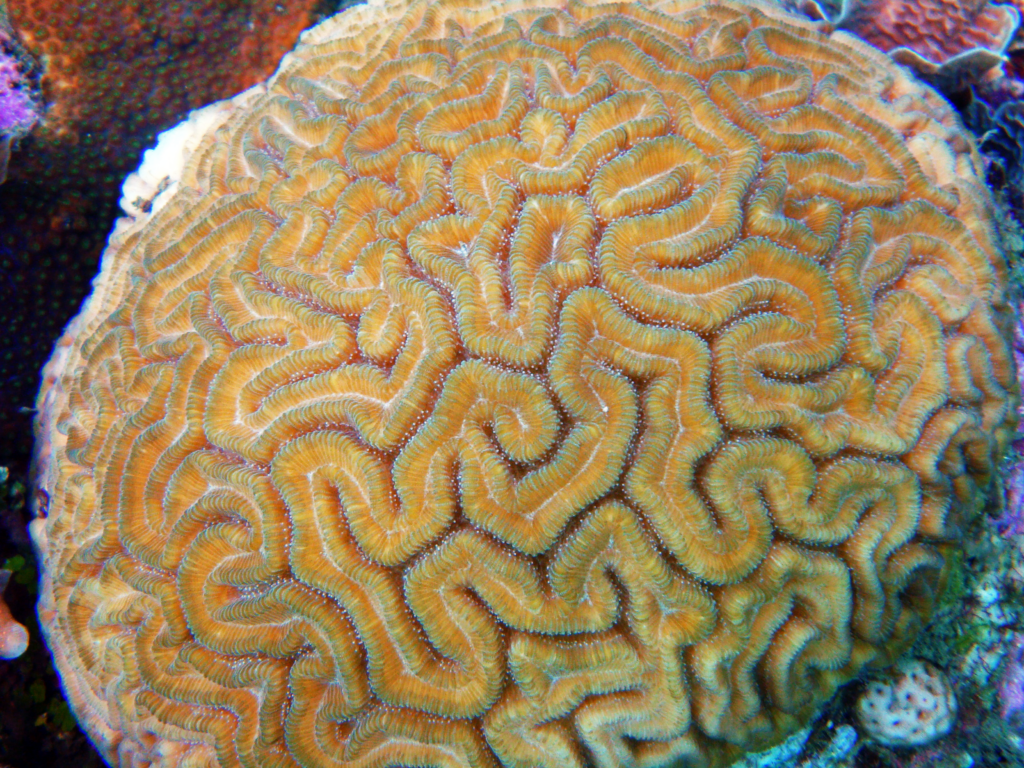
Boulder brain coral (Colpophyllia natans) – The biggest brain
This coral can form impressive large rounded domes up to 2 meters (6 feet) in diameter, but they can also form large rounded plates. You can tell this species apart from other brain corals by looking closely at the small lines running from the top of the ridges to the middle of the valleys.


Symmetrical brain coral (Pseudodiploria strigosa) – The dominant brain
This brain coral is a dominant Caribbean reef-builder species that forms hemispherical domes or smoothly contoured plates. It’s common for people to mix up boulders and symmetrical brain coral, but if you look closely at the ridges, the symmetrical brain coral has thinner ridges and does not have that distinct groove running down the center of the ridge to the middle of the valley.

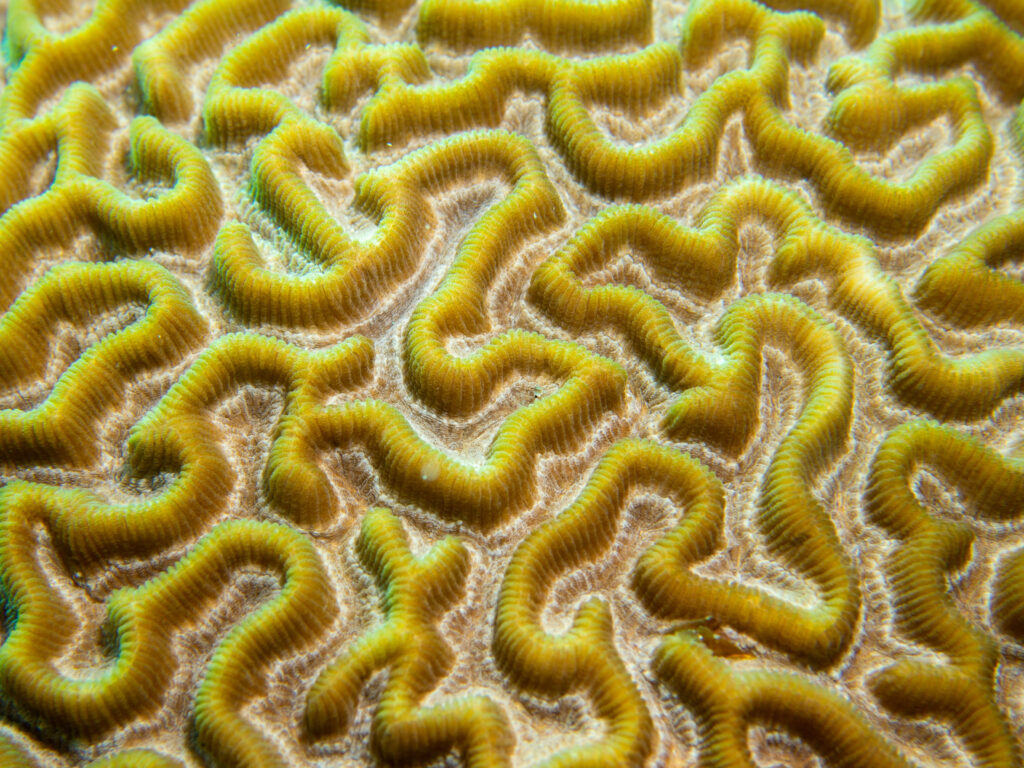
Knobby brain coral (Pseudodiploria clivosa) – The melting brain
The knobby brain coral can grow into large encrusting mounds, making it look like the colony melted onto the reef. Colonies form knobby bumps and have thinner ridges compared with the other 3 brain coral species.
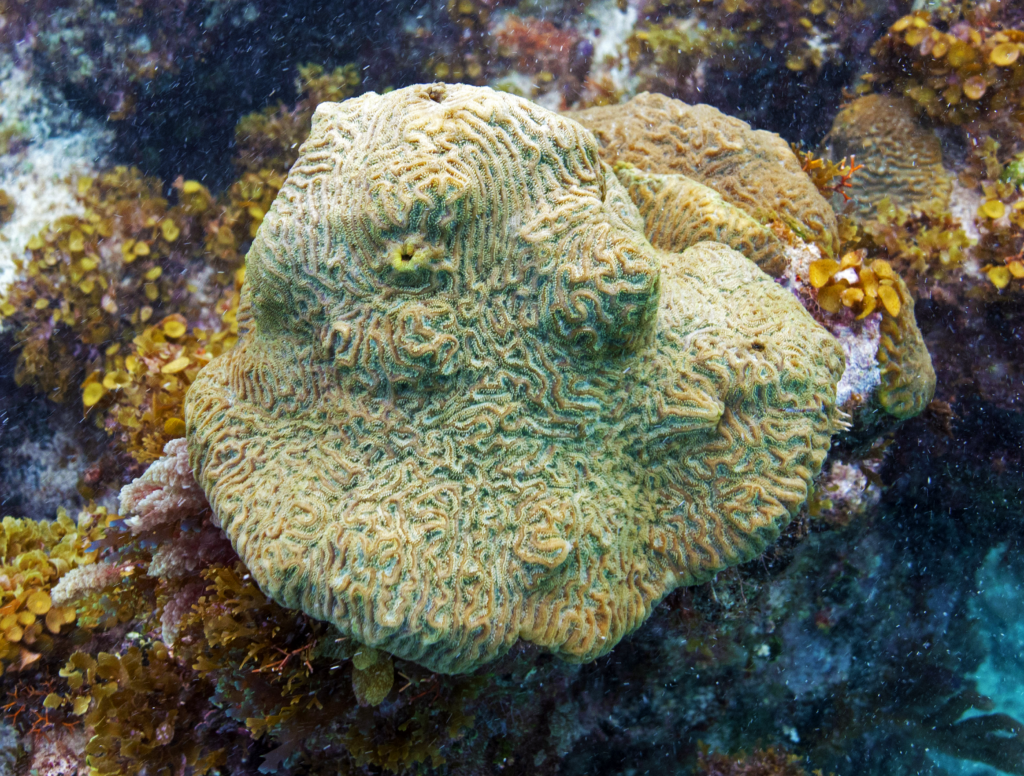
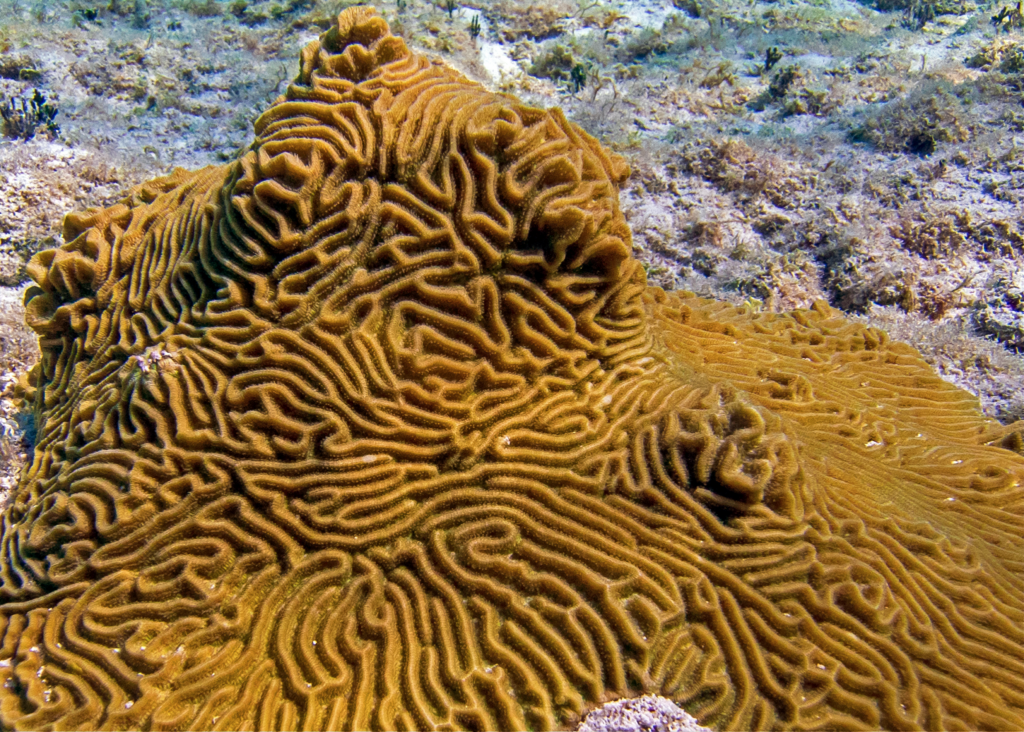
Don’t get confused with Meandrina meandrites – the maze coral
Although not considered a brain coral, the maze coral could be confused with one. The maze coral is an encrusting species that can form hemispherical colonies or flat plates. You can easily ID the maze coral from other brain corals by its large bulging septa (skeletal plates) that alternate like a zipper.
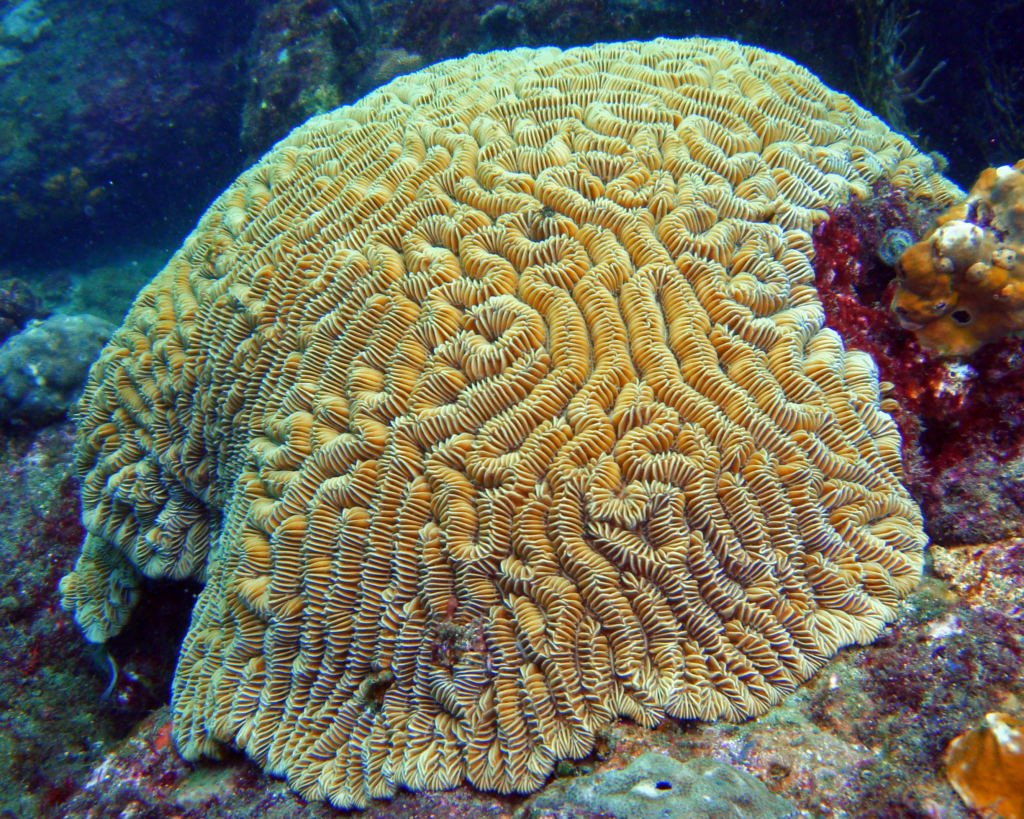
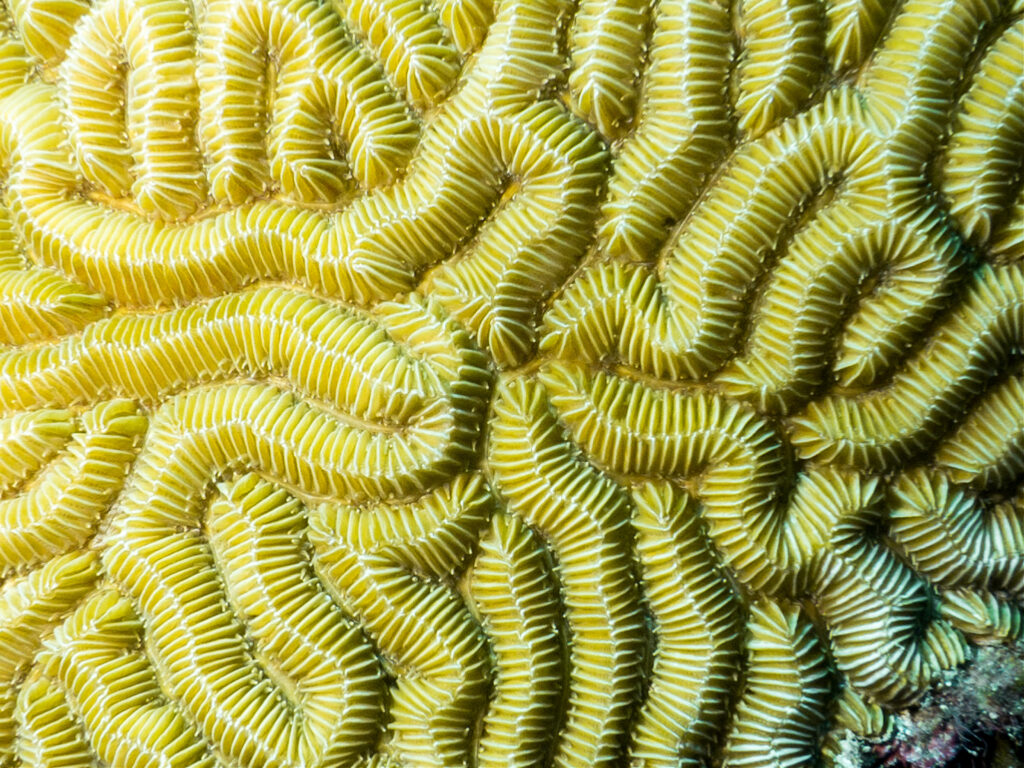
Brain corals are extremely susceptible to Stony Coral Loss Disease (SCTLD). Being able to identify and report if you spot them with the disease, it’s valuable and will contribute to our efforts in stopping the spread of the disease. For more information about our coral restoration project please contact: nataliahurtado@islandschool.org
